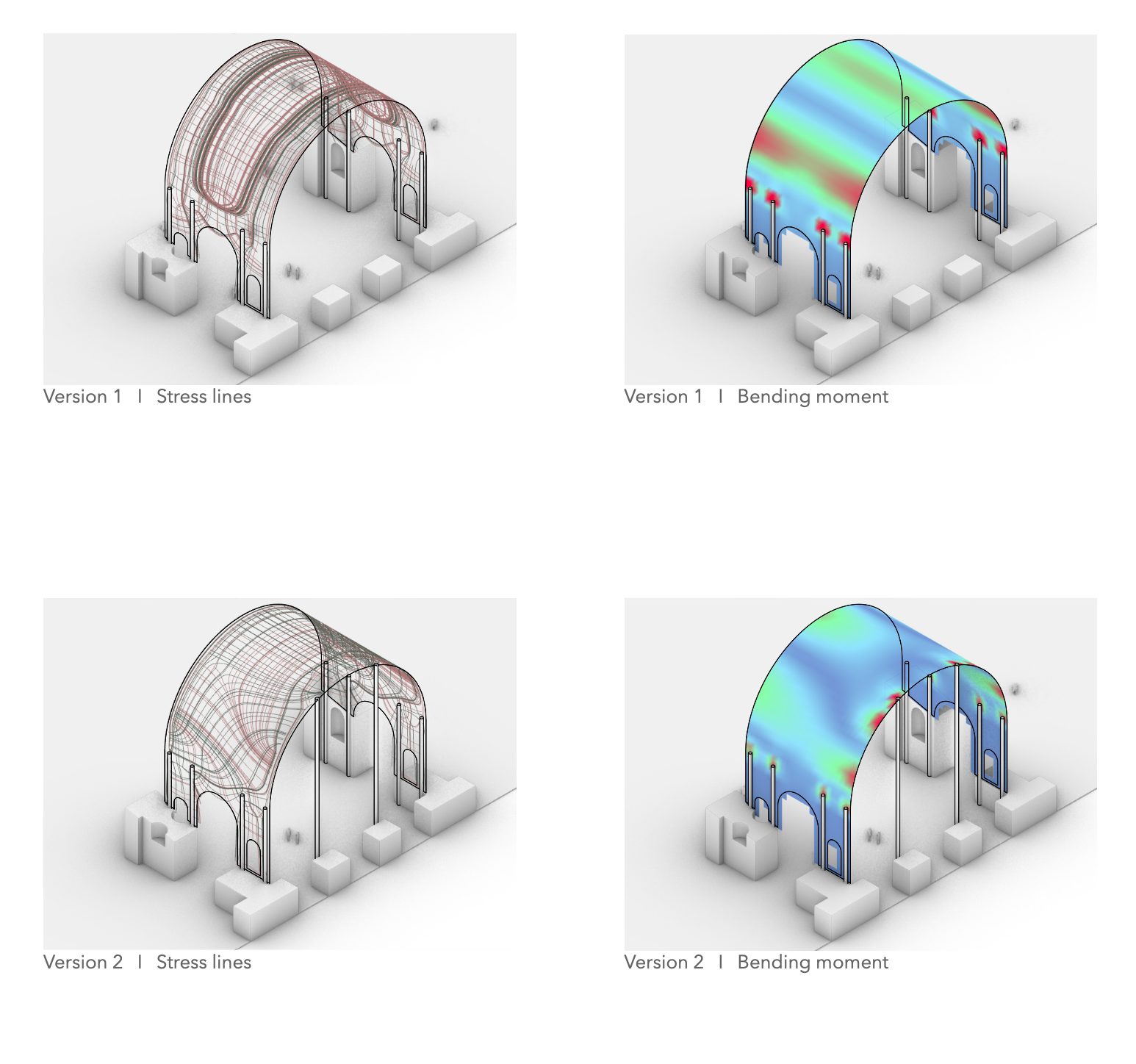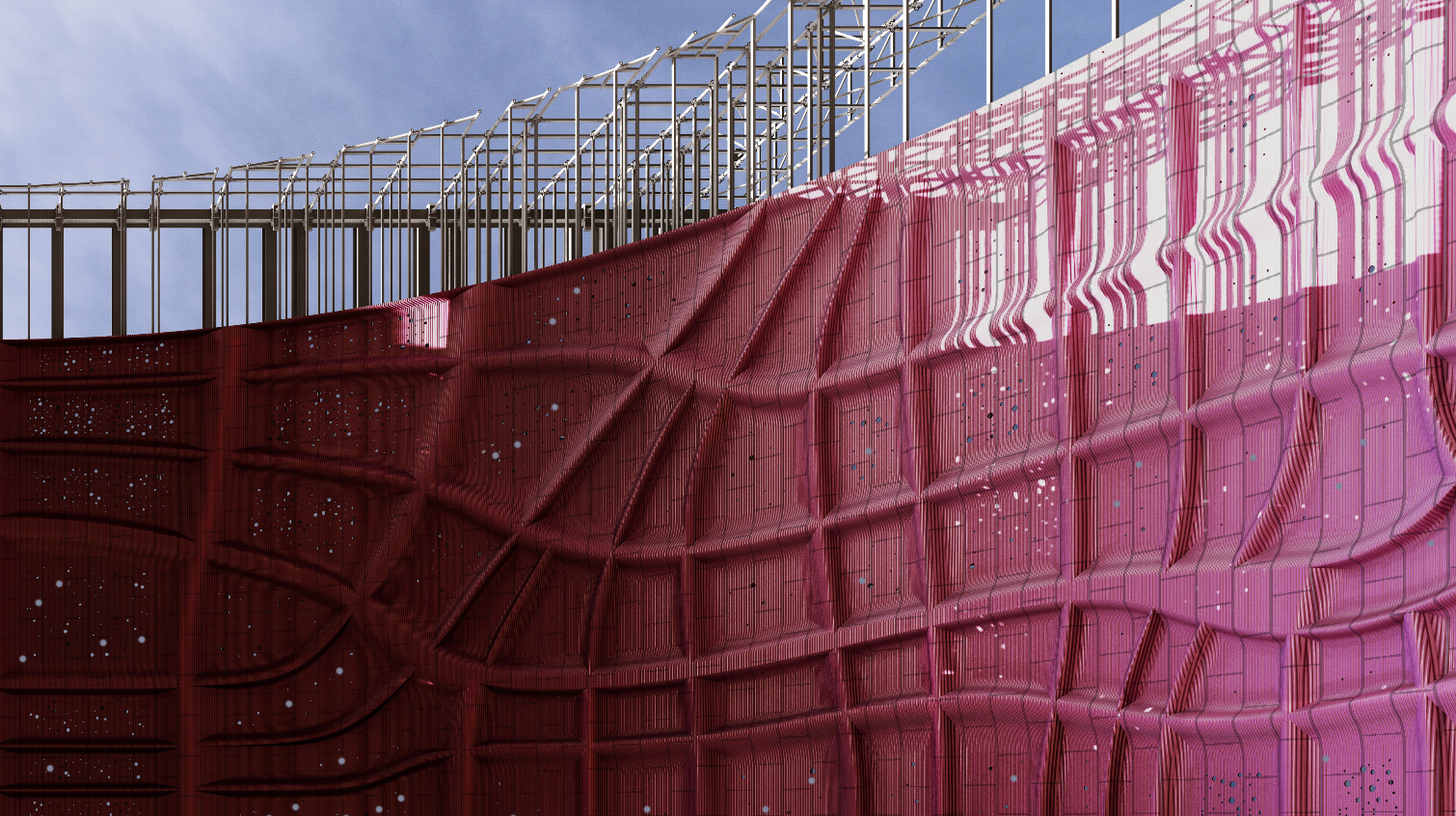
The Vault
3D Clay Printing
Through this work we investigate additive manufacturing with clay, exploring its spatial and ornamental capacities within the given cultural context of the ruins of the Maxentius Basilica within the Forum Romanum. The historic context, the local identity and aspects related to craftsmanship inform our design thinking and the robotics fabrication strategy. Roman architecture represents a culmination point of technological innovation, material understanding and architectural expression. The brick is at the centre of the historic evolution of Roman architecture but also construction technology in general. In order to illustrate the potency of the brick in the past but also in the present, particularly within today’s architectural context which is marked by technological innovation in the fields of computational design and robotic fabrication, the brick is undergoing a transformation from its traditional form to a digitally informed tectonic expression.
In this project, we focus on one of the missing vaults of the Maxentius Basilica and exploring the digital and physical challenges of working with clay and additive manufacturing. The force flow lines and stress lines within the Basilica’s vault are hidden from the viewer. We intend to expose them, making the immaterial visible through material expression. These are used as a departure point for a series of advanced structural analysis, simulation and evaluation steps. The force flow lines are expressed three-dimensionally in the tile design through a series of computational steps, followed by a computational tessellation strategy. In order to reduce material use but also to amplify the spatial impact of the new vault on the site through light and shadow plays, a porosity strategy was applied on the ceramic tiles, allowing for light to pass through.
The vault at a 1:10 scale is currently in production and offers an insight into the complex structural realities of ancient architecture as well as the expressive value of new tools of design and making. This prototype showcases how clay lies at the intersection of craft, tradition, innovation and sustainability, providing architects, engineers, material scientists and makers with the ground to further advance and refine computational design-to- robotic production strategies.
Team: Jan-Willem Melchers, Thijs Maas Geesteranus, Dena Khaksar
Computational Tutors: Cristina Nan & Mattia Zucco
Structural Expertise: Arjan Habraken
Eindhoven University of Technology


















